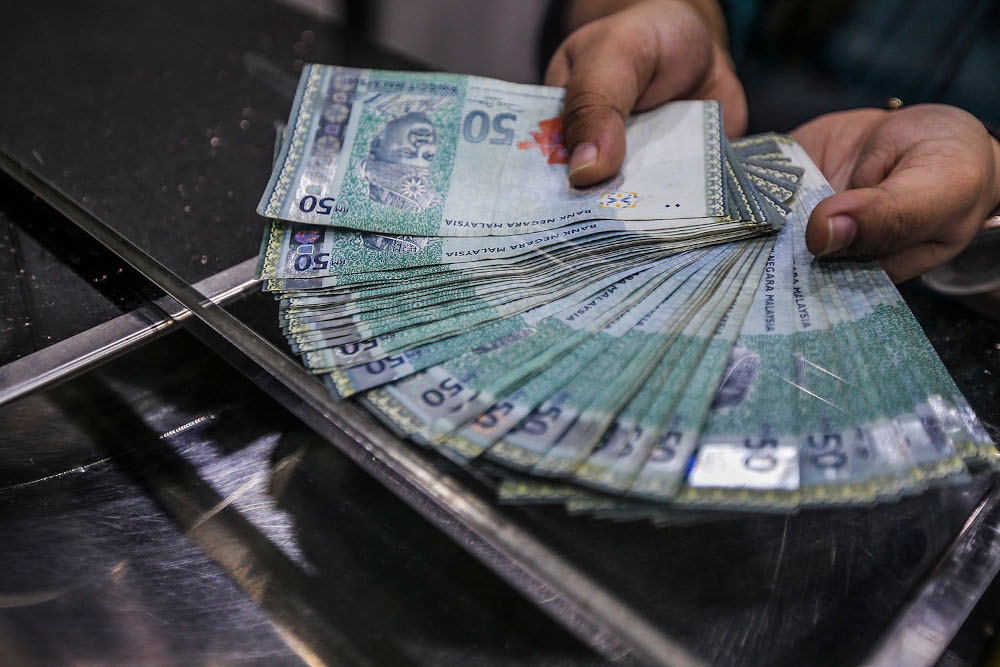MAY 27 ― Last month, the Better Malaysia Foundation (BMF), corporate social responsibility unit of the Berjaya Corp Group, published an ideation of affordable homes for low-income Malaysians that was later met by disapprovals of many netizens. Meant for B40 homes, these units range from 450 sqft to 900 sqft in size and will cost between RM120,000 to RM300,000. Strangely enough, the idea of carving a 900 square feet apartment flat into 5 rooms, which invites comparison to the claustrophobia-inducing “cage homes” in Hong Kong first photographed by Benny Lam in 2017, was only the second-most outrageous bit of the proposal.
Instead, it was the proposal of an “innovative” intergenerational financing, one that extends up to 60 years and could incur up to twice the repayment than a normal loan, that highlighted the imprudence behind the plan. Malaysia already has one of the world’s most lenient policies when it comes to property financing, introducing a 90 per cent financing-to-value (LTV) limit for the first two properties and a 70 per cent LTV limit only from the third property onwards. By contrast, Asian countries where some of the hottest property markets belong to have lower LTV ratio, such as Singapore’s cap at 75 per cent for the first home while Hong Kong and South Korea have a 60 per cent cap for most new purchases.
Discussion on mortgage financing policies aside, it is worth reflecting about the cost of being poor in Malaysia, just as the economy is reeling from the pandemic’s consequences. While some are quick to attribute the society’s poor as incapable of managing their own finances responsibly and undeserving of assistance, evidence from behavioral economics has shown that poverty is a self-perpetuating phenomenon, and those stuck in low income are more likely to be a victim of their circumstance.
The Stanford Marshmallow Experiment was a series of studies in the 1970s aimed at finding out the correlation between ability to exert self-control and success in life. In the experiments, preschool kids were given a plate of marshmallows by researchers who then left after telling the kids that they can start snacking at any time. However, if they could wait until the researcher’s next visit, more marshmallows will be rewarded. The kids’ waiting times were recorded and many years later another tracking study was done, this time finding that the more patient kids scored better on standardized tests as well as stress-coping and health indicators. And, voila, a concrete proof that poor outcomes in life is a result of poor self-control or willpower! Or was it? Another replication study in 2014 revealed that richer kids are able to better exercise willpower, upending the conclusion: self-control is a function of socioeconomic status, not otherwise. The reason for the surprise finding was explained by Charles Duhigg in his book The Power of Habit: self-control is like a muscle that gets fatigued with heavy use. The poor will reasonably face many more challenges that could result in diminished attention span and ability to make sound financial decisions. Naturally when we do not have to worry about putting food on the table, missing electricity or water supply from skipping bills or rationing budget for various expenditures, we are more likely to be able to exert self-control elsewhere. Economic uncertainty and financial insecurity can therefore drive the society’s poor ― who likely works in less stable jobs under precarious conditions ― to spend first rather than save, or make other poor financial choices under the constraints.
A Khazanah Research Institute (KRI) paper in 2018 suggested that the intergenerational earnings elasticity of Malaysians stands at 0.19, meaning less than one-fifth of parental earnings’ advantage or disadvantage are passed down to children. The same study also identified 74 per cent of those born by parents in the lowest income quintile (lowest 20 per cent) of income as successful in moving up the income ladder, implying that social mobility may not be as severe an issue. However, Malaysia’s socioeconomic structure may be more flexible owing to its developing country status, and the economy has undoubtedly evolved from 5 years ago, so the picture may have changed.

The pandemic has only served to worsen this divide as well. Although official measures of inequality such as the Gini coefficient or consumption data by different income groups are slow to come by, we are already seeing how poorer households fare worse from many aspects, as the healthcare crisis. News reports of children having difficulty attending online classes due to the lack of mobile devices and stable internet (Veveonah’s plight comes to mind) are only a reflection of how the young generation has to navigate through an increasingly disorganised education system. The mental costs of living in small areas too compounds over time, as family members who usually divide their time between work, study and home now all crowd the same living space that suddenly appears woefully inadequate. The ones living in rural areas may also be slow to receive vaccinations as the PPVs are usually located at large, urban community halls or event centers, making a return to normality a more distinct prospect for them.
Ultimately, the appeal towards assisting the poor is that we can break the chain of poverty, recognising that it has an ability to self-perpetuate. While the Better Malaysia Foundation’s affordable home scheme was well-intended to improve quality of life, it may have achieved the opposite by unintentionally reducing the likelihood that a family departs from the low-income segment. The country also needs more meritocratic policies that promote equal opportunities instead of equal outcomes, so that incentives to innovate and compete complement our national growth. The cracks behind our economic model have been laid bare through the pandemic, and it is now time to reassess our approach to achieve “shared prosperity”, as outlined by the UN’s Sustainable Development Goal.
* This is the personal opinion of the writer or organisation and does not necessarily represent the views of Malay Mail.





















